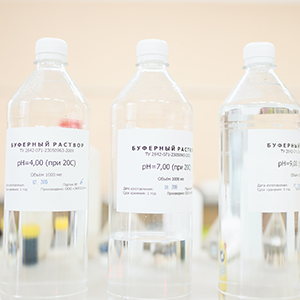I. Mobile phase impurities are leading to high and variable baselines.
Impurities are highly soluble in the mobile phase in specific cases where they are not retained by the hplc column and contribute to higher-than-normal detector signals throughout the chromatogram. When using gradient elution, if impurities are present in only one solvent used in the gradient, the detector signal may vary slowly and about the proportion of solvent contributing to the mobile phase at any time.
Mobile phase impurities do not exhibit signal characteristics that resemble typical chromatographic peaks, so they do not directly conflict with the analyte peaks. However, if the impurities are physicochemically similar to the target analyte in the separation, the impurities can exhibit features that look like typical peaks in the baseline.
II. Detector response to major mobile phase components.
Sometimes small changes in the solvent preparation used for LC methods can dramatically affect the appearance of the baseline. A typical example of this effect is the change from a phosphate-buffered mobile phase to one that uses formic acid as an additive. Although phosphate substances are highly transparent to UV light down to about 200 nm, carboxylate substances (e.g., formate, acetate) absorb more than phosphate below 230 nm. This difference is easily observed when gradient elution is used, and the additive is present in only one of the solvents used in the mobile phase gradient (e.g., most aqueous solvents).

III. Inconsistent mobile phase composition due to pump problems.
Viscous check valves and stagnant air bubbles are common causes of inconsistent flow rates in high-pressure pump heads. When one of the two pumps in a binary pump system fails, it can lead to extreme changes in the mobile phase composition that passes through the HPLC column and eventually reaches the detector. If the detector in use is sensitive to these compositional changes, then an abnormal detector baseline may signify a true pump-induced problem. An extreme example is a case where solvent A contains ammonium acetate, solvent B is acetonitrile, and UV detection is used at 210 nm. In this case, solvent A absorbs more light than solvent B, but if the composition of the A/B mixture remains consistent over time, a smooth, flat detector baseline will be observed. However, if the flow from the A channel becomes inconsistent due to check valve problems or bubbles, the composition of the A/B mixture will be inconsistent, resulting in an irregular pattern in the baseline.
IV. Temperature effects.
Different detectors are affected by temperature variations in different ways. It is well known that the signal baseline for refractive index (RI) detection is very sensitive to temperature changes. Therefore, stabilizing the detector’s temperature and the laboratory environment will help minimize baseline drift. UV absorbance detectors are also susceptible to temperature changes, which can cause baseline drift, but to a lesser extent than RI detectors. Modern UV detector designs are much less susceptible to changes in laboratory temperature than older designs of the past.

When impurities are present in the mobile phase of the chromatographic system, these problems can be solved by uHPLCs’s mobile phase solvent filter, which has these characteristics:
(1) Stable performance, better resistance to shock and alternating load than other metal filter materials;
(2) Uniform and stable pore space, good permeability, low-pressure loss, high filtration precision, and stable filtration performance of separation effect;
(3) excellent mechanical strength, no need for additional skeleton support protection, simple installation, and use, easy maintenance, and good assembly.
(4) easy to back-blow, washable, strong regeneration capacity, repeated cleaning and regeneration after the filter performance recovery of more than 90%, long service life, and high material utilization.
The knowledge shared by uHPLCs today is here. Hope it will help you in your work!
Post time: Sep-30-2022






